The CPR System
Developed in 1995 as an Alternative to the Green Dot
With the introduction of the Green Dot by the DSD (Duales System Deutschland) in Germany in 1992, the recycling of sales packaging was thereafter propagated as the solution to all waste disposal problems. The avoidance of waste and reuse systems took a backseat. Nana Petzet’s counter model, the CPR System (Collecting Preserving Researching), takes as a point of departure the term “Wertstoff” or “valuable recyclable material” propagated by DSD: if the trash marked with a Green Dot really is “valuable material”, which I have paid for, then why shouldn’t I recycle it myself and determine a new function for it within my own household? While the plastics recycling of DSD turns out to be a technically and energetically elaborate transformation of a high-value product into a product with notably inferior characteristics, the material directly processed as part of the CPR System retains its value. Above all, the spread of the CPR System can contribute decisively to basic principle of reducing garbage in the first place: once a household is fully equipped with waste paper baskets made of plastic bags, wall carpets made of milk cartons and soap dishes made of champagne corks, then the fundamental issue of waste avoidance automatically crops up again, more urgently than ever.
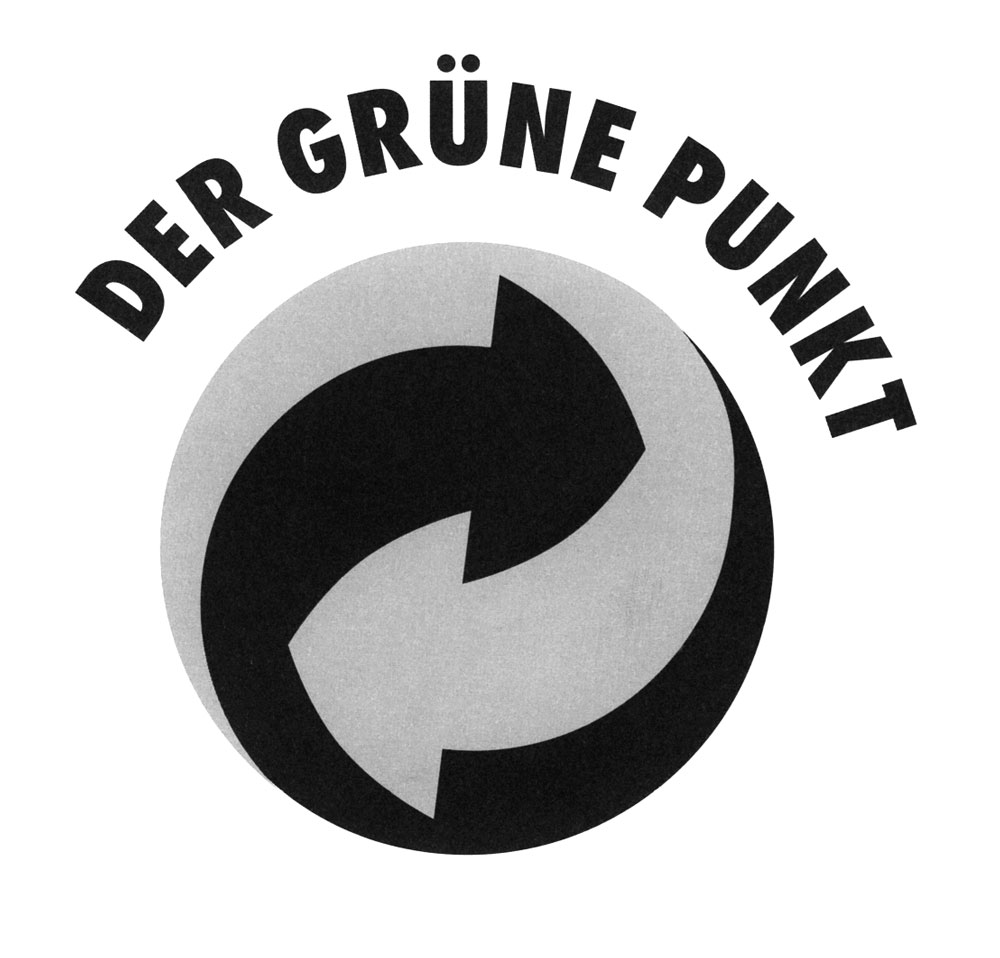 1 The DSD’s “Green Dot” symbol with its intertwined arrows reminiscent of yin and yang is intended to highlight the idea of the cycle.
1 The DSD’s “Green Dot” symbol with its intertwined arrows reminiscent of yin and yang is intended to highlight the idea of the cycle.
 2 The symbol of the CPR System: the eye and the tree in the tear symbolize the responsibility of each individual for their environment.
2 The symbol of the CPR System: the eye and the tree in the tear symbolize the responsibility of each individual for their environment.
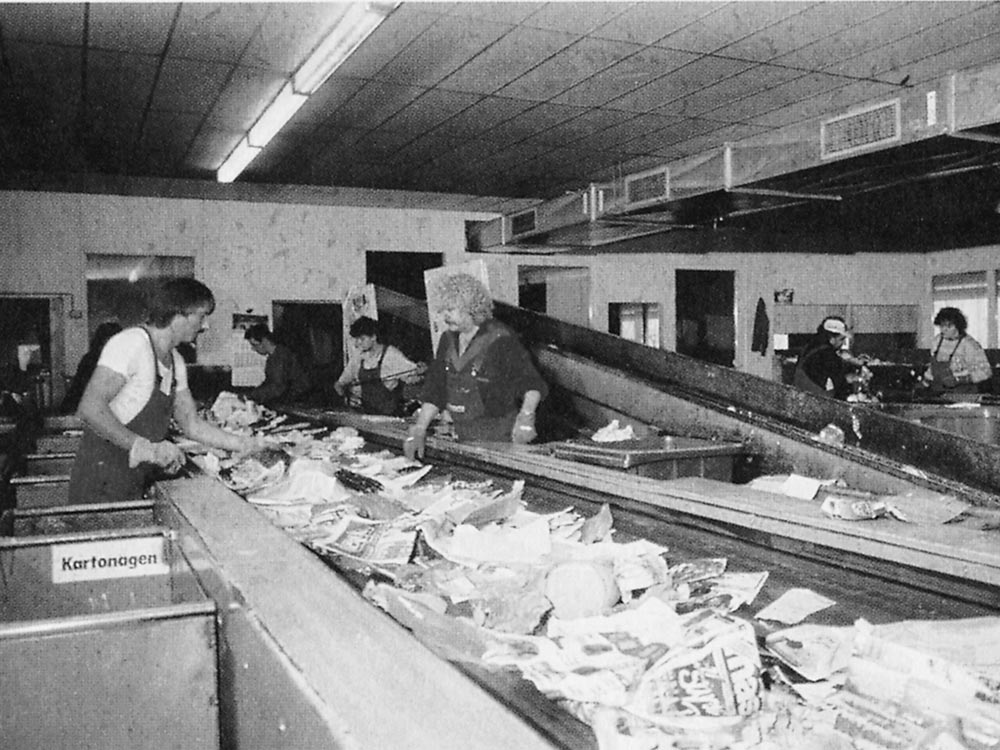 3 Before the actual recycling, all the different packaging must be separated once more in the sorting plants according to material type.
3 Before the actual recycling, all the different packaging must be separated once more in the sorting plants according to material type.
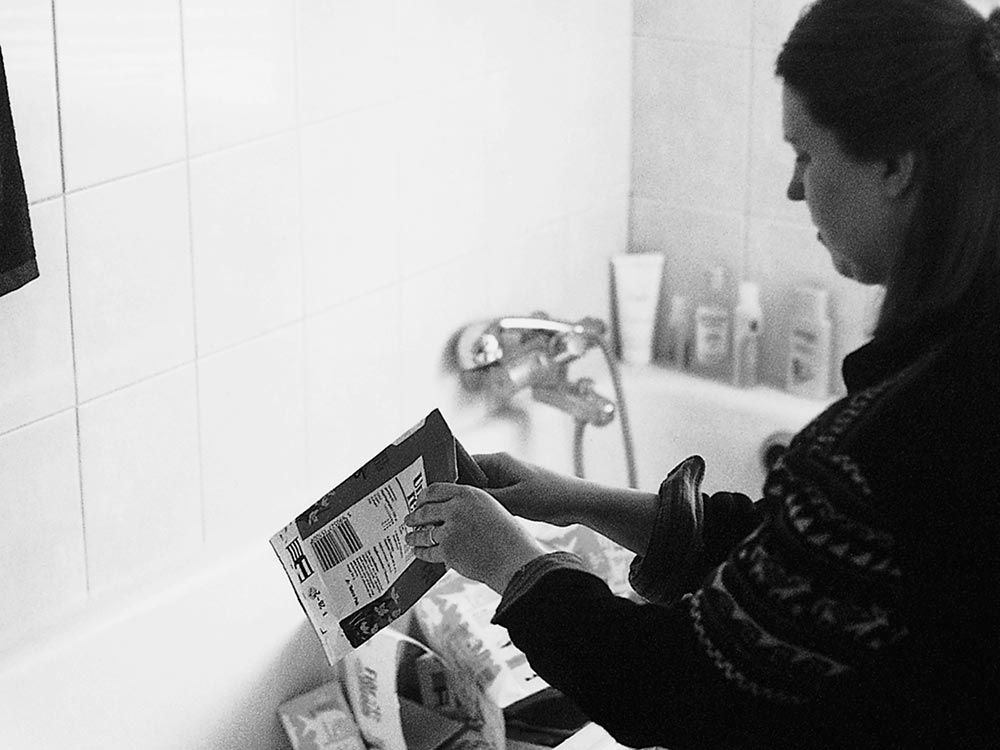 4 Milk cartons are washed in the bathtub. Reykjavík, 1998
4 Milk cartons are washed in the bathtub. Reykjavík, 1998
 5 In the CPR System, the decision on the number and type of collecting containers as well as the specific categories for collecting is left to the participant.
5 In the CPR System, the decision on the number and type of collecting containers as well as the specific categories for collecting is left to the participant.
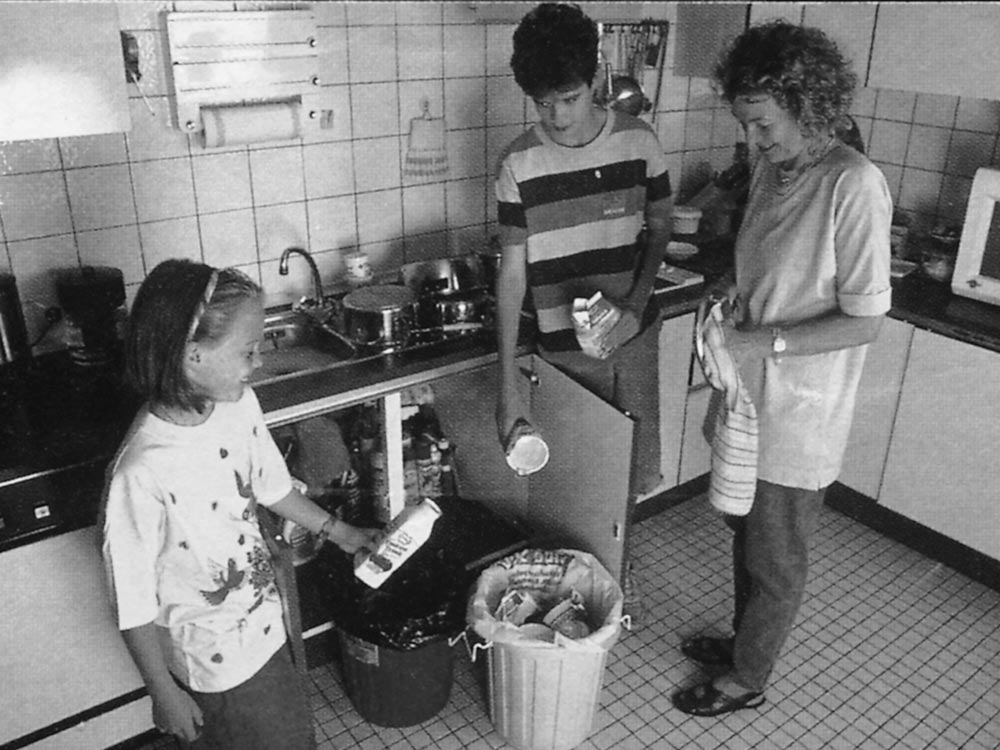 6 If a household collects for the Green Dot, sales packaging made of metals, plastics and composites is placed together in one container – emptied of residues and as dry as possible.
6 If a household collects for the Green Dot, sales packaging made of metals, plastics and composites is placed together in one container – emptied of residues and as dry as possible.
 7 Recycled products the DSD: the necessary sorting purity for such high-value products can often not be achieved.
7 Recycled products the DSD: the necessary sorting purity for such high-value products can often not be achieved.
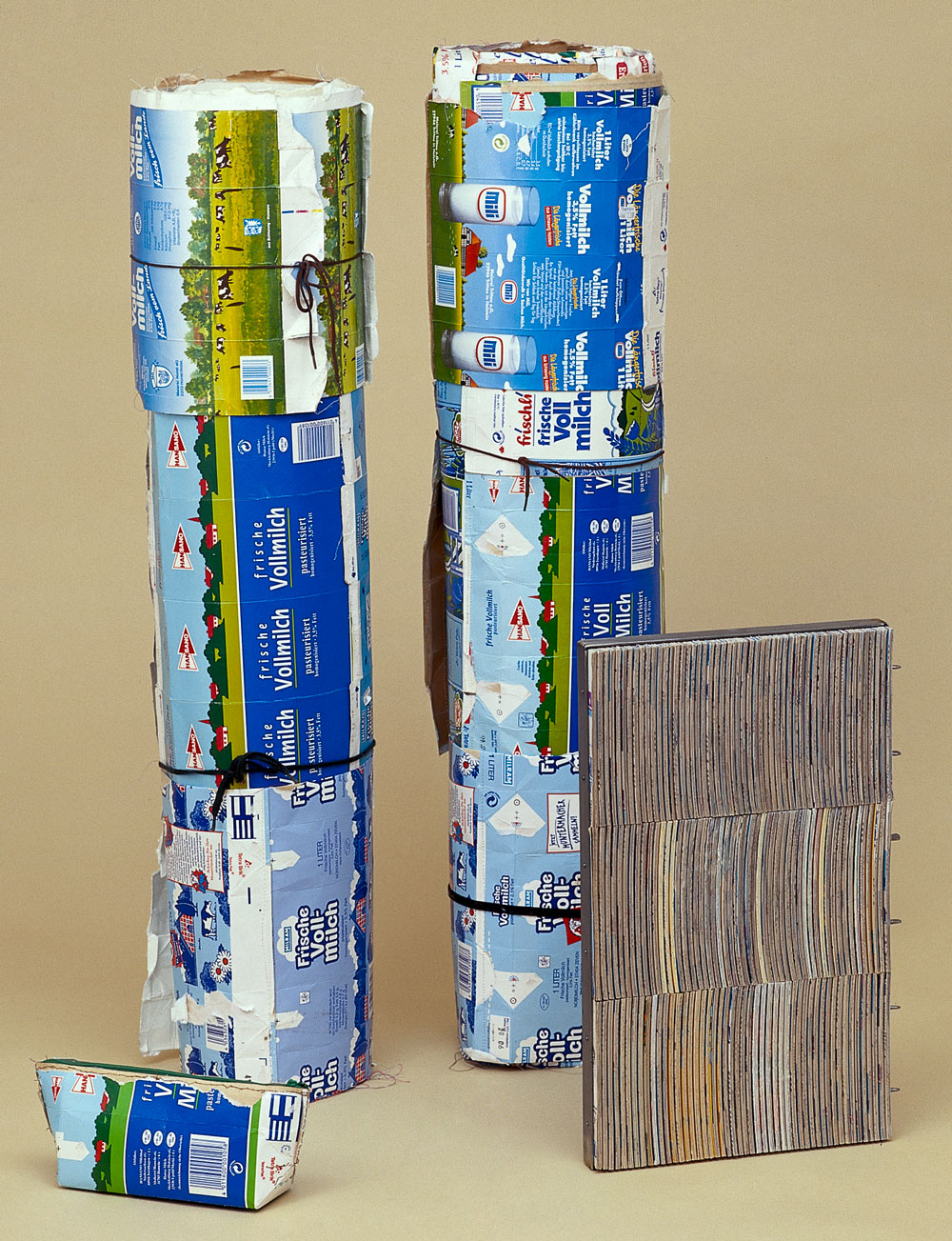 8 Milk cartons, unfolded and cleaned, are an ideal material for toiletry bags, room dividers or doormats.
8 Milk cartons, unfolded and cleaned, are an ideal material for toiletry bags, room dividers or doormats.
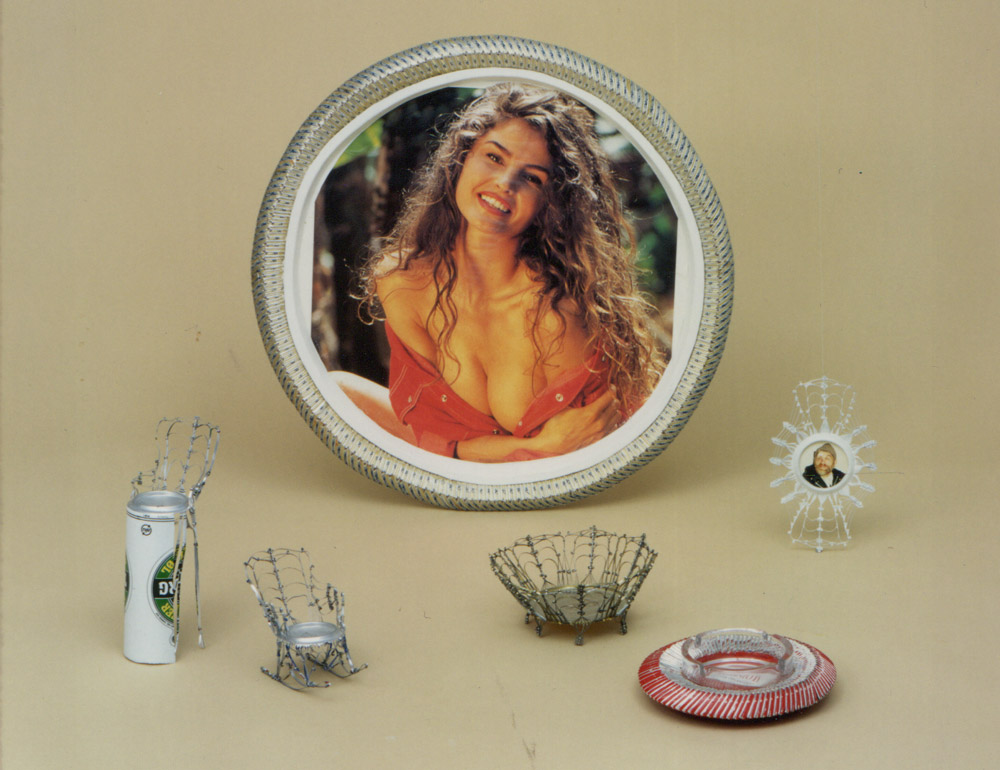 9
9
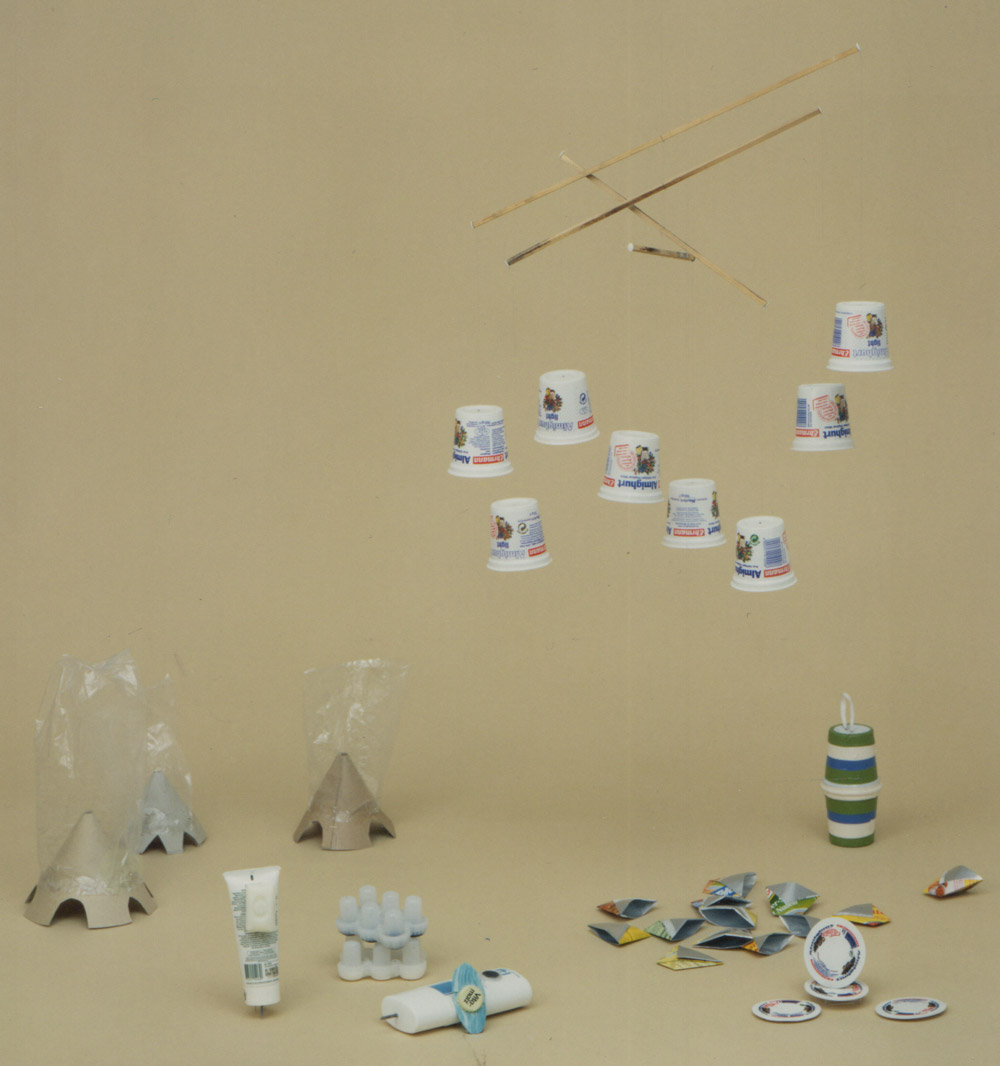 10
10
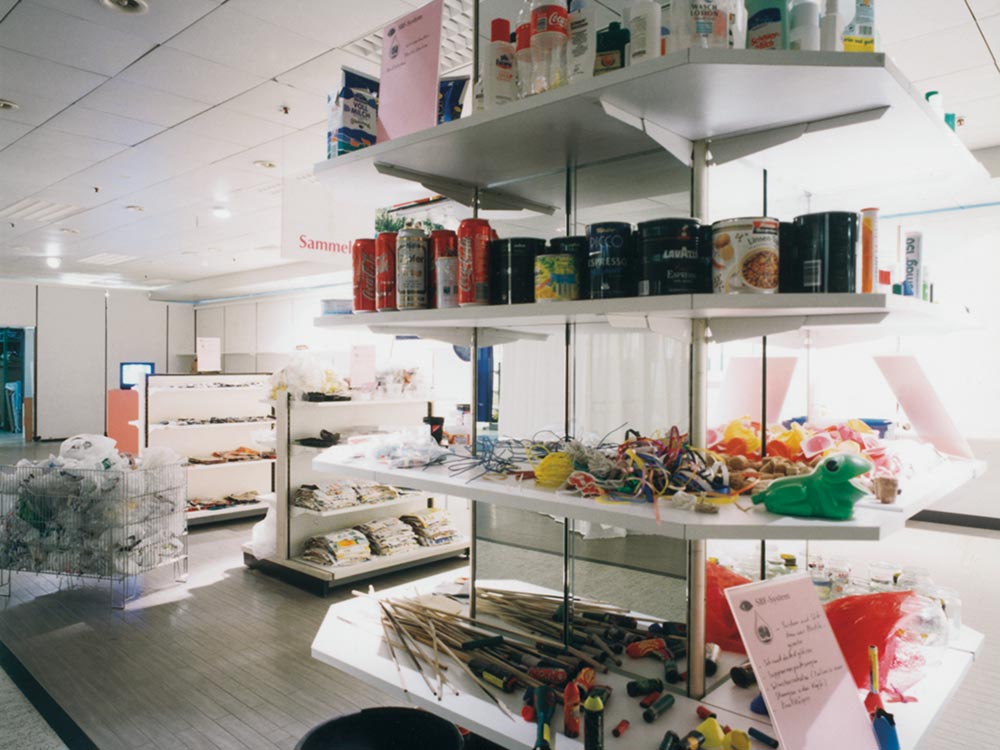 12 The CPR System, presentation of cleaned packaging waste in the area for special presentations (between the toy department and the household goods department) of the department store Kastner & Öhler in the context of the exhibition 2000 minus 3, Art Space plus Interface, steirischer herbst '97, Graz 1997
12 The CPR System, presentation of cleaned packaging waste in the area for special presentations (between the toy department and the household goods department) of the department store Kastner & Öhler in the context of the exhibition 2000 minus 3, Art Space plus Interface, steirischer herbst '97, Graz 1997
 13
13
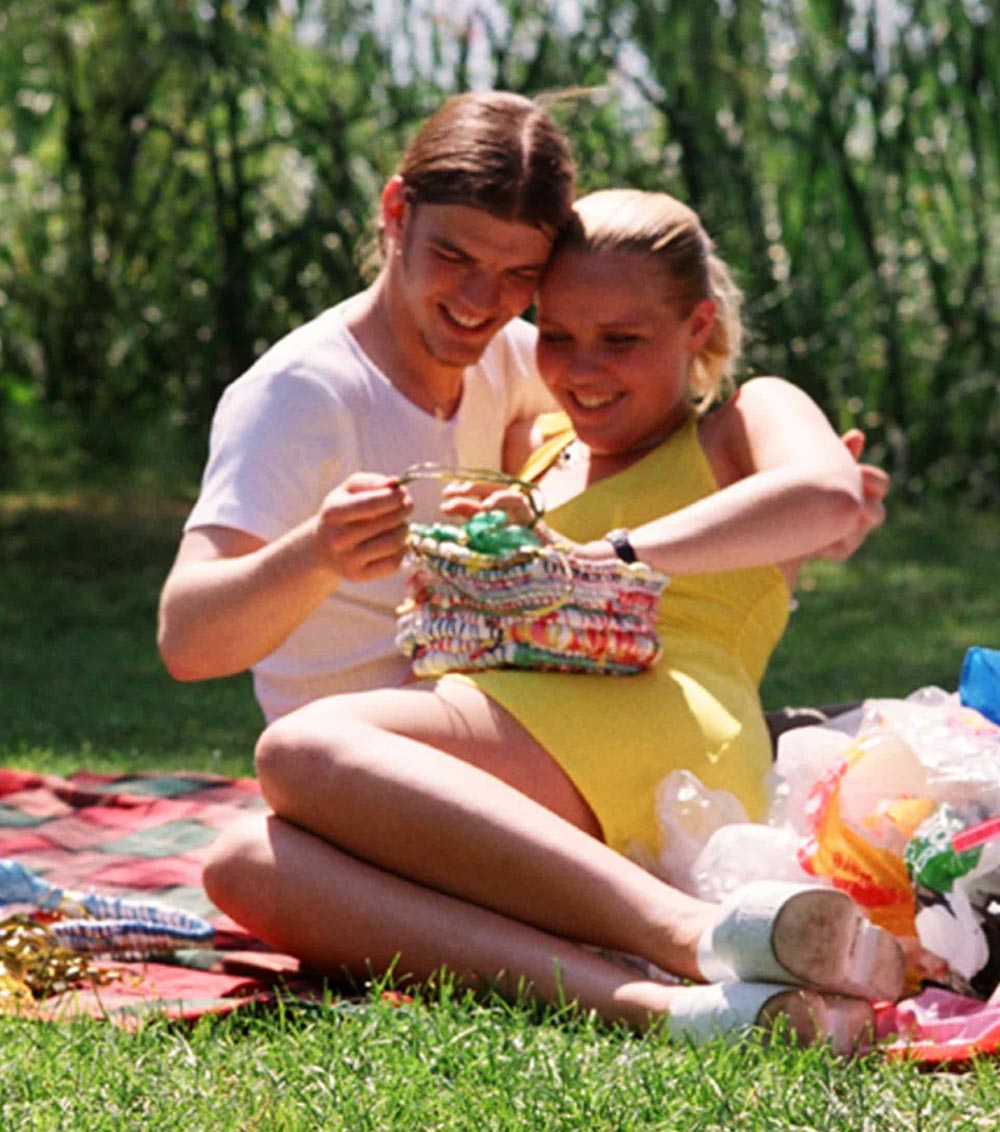 14 More and more Germans see waste recycling according to the CPR System not only as a chore but as a rewarding and meaningful leisure activity.
14 More and more Germans see waste recycling according to the CPR System not only as a chore but as a rewarding and meaningful leisure activity.
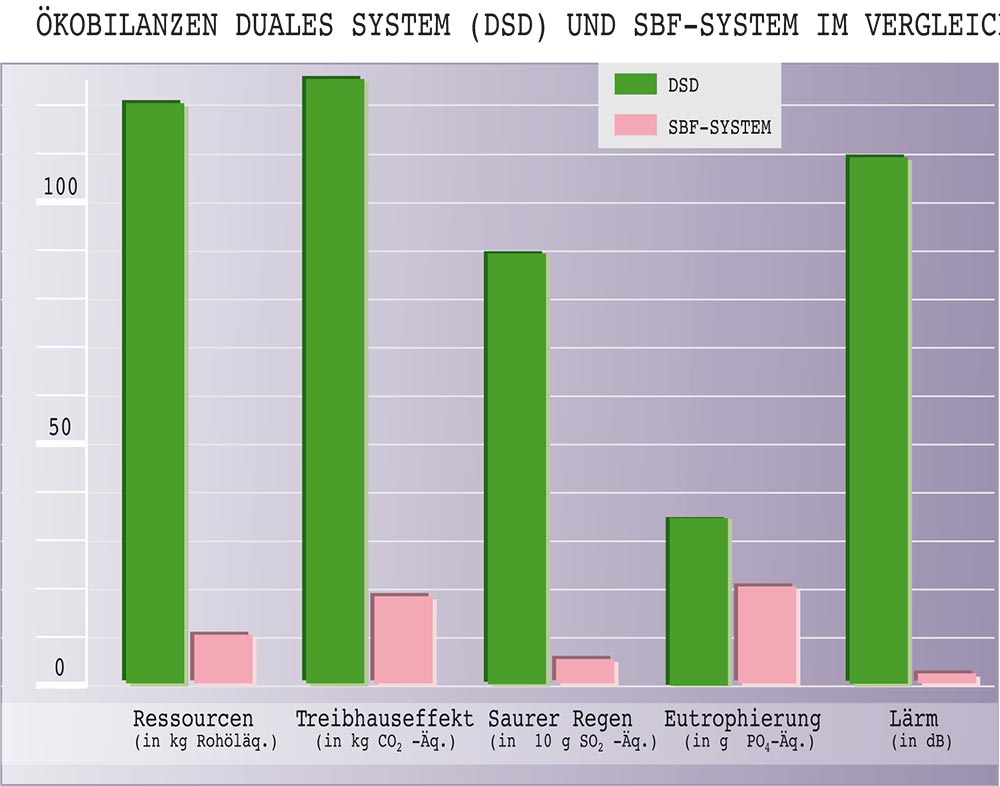 15 If one compares the negative effects of the second (DSD) and third (CPR) waste disposal systems, the figures (related to the recycling of one tonne of waste) of the CPR System are clearly more favourable.
15 If one compares the negative effects of the second (DSD) and third (CPR) waste disposal systems, the figures (related to the recycling of one tonne of waste) of the CPR System are clearly more favourable.
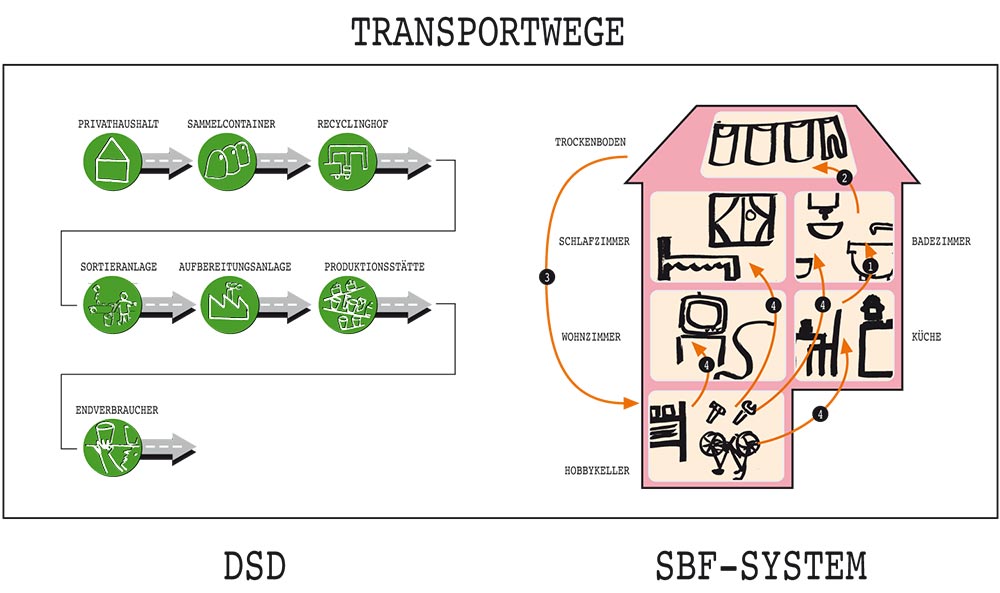 16 The lower distribution distance is the decisive factor for the superiority of the CPR System.
16 The lower distribution distance is the decisive factor for the superiority of the CPR System.
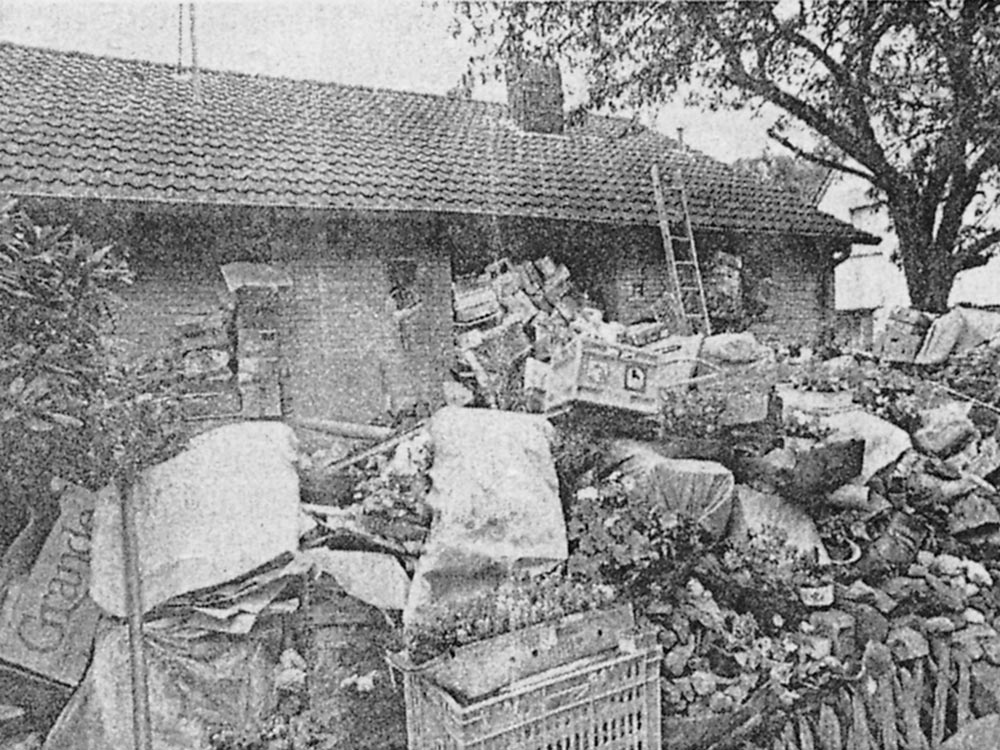 17 Newspaper clipping with the picture of a front garden of a so-called clutterer. Even living consistently according to the CPR System nonetheless ultimately leads to congestion: the final disposal site in one’s own four walls.
17 Newspaper clipping with the picture of a front garden of a so-called clutterer. Even living consistently according to the CPR System nonetheless ultimately leads to congestion: the final disposal site in one’s own four walls.
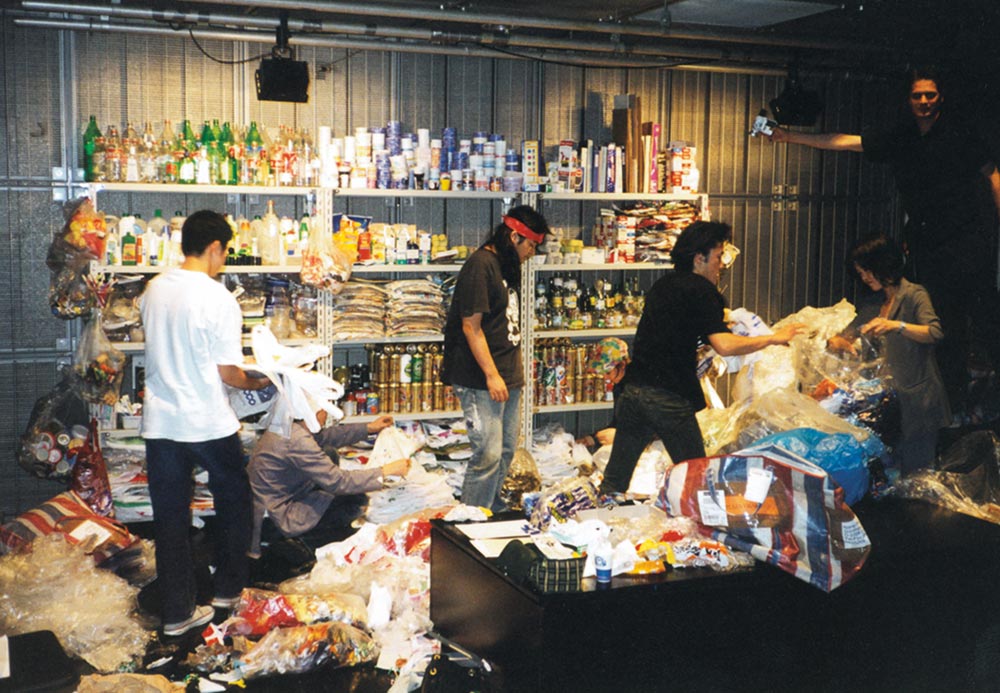 18 Exhibition today tomorrow, Kirin Plaza Osaka, 1999. Packaging waste collected in Germany, Iceland, Austria and France is unpacked in Japan.
18 Exhibition today tomorrow, Kirin Plaza Osaka, 1999. Packaging waste collected in Germany, Iceland, Austria and France is unpacked in Japan.
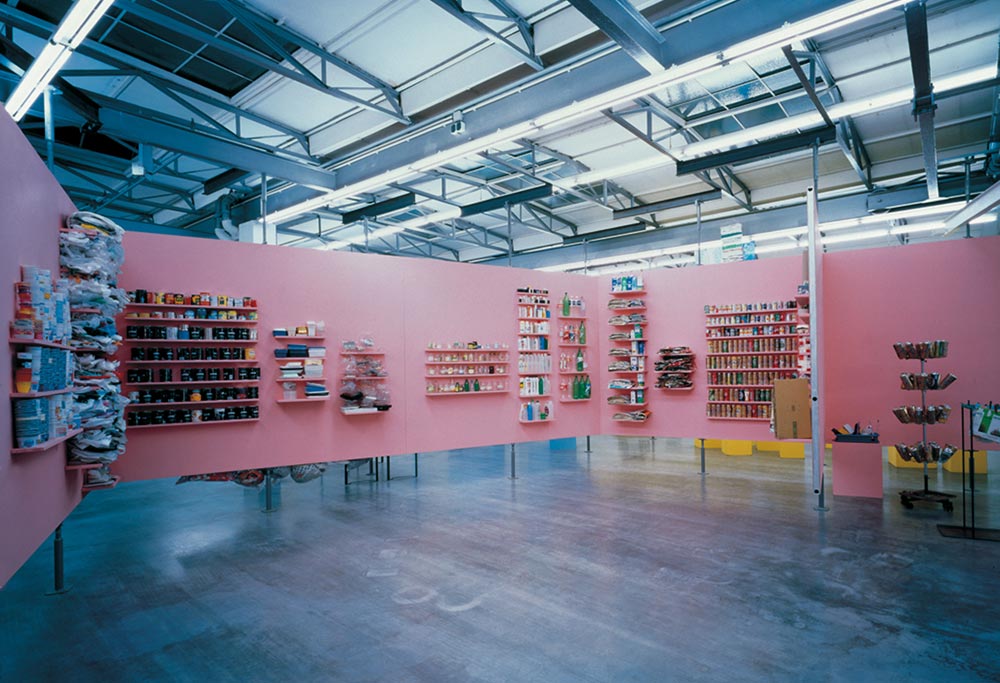 19 The CPR System section “Collecting” featuring wall shelves with used sales packaging, a bottle dryer wall labelling: “Collecting”, “Cleaning”, “Drying”, “Sorting”, “Storing”, exhibition Private Werte (Private Values), Künstlerwerkstatt Lothringer Straße, Munich 1999.
19 The CPR System section “Collecting” featuring wall shelves with used sales packaging, a bottle dryer wall labelling: “Collecting”, “Cleaning”, “Drying”, “Sorting”, “Storing”, exhibition Private Werte (Private Values), Künstlerwerkstatt Lothringer Straße, Munich 1999.
 20 The CPR System section “Preserving", presentation of recycled and repaired objects, wall labelling: “Preserving”, “Reusing”, “Repurposing”, “Sorting”, “Recycling”, “Decorating”, “Repairing”, exhibition Private Werte (Private Values), Künstlerwerkstatt Lothringer Straße, Munich 1999
20 The CPR System section “Preserving", presentation of recycled and repaired objects, wall labelling: “Preserving”, “Reusing”, “Repurposing”, “Sorting”, “Recycling”, “Decorating”, “Repairing”, exhibition Private Werte (Private Values), Künstlerwerkstatt Lothringer Straße, Munich 1999
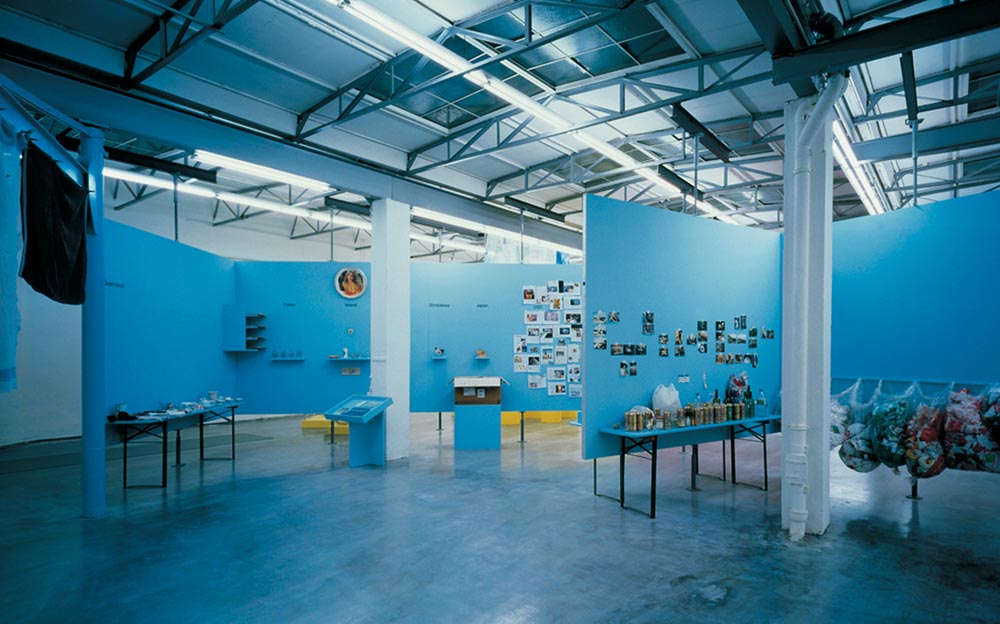 21 The CPR System section “Researching”, presentation of recycled objects and repaired objects, wall labelling: “Seydisfjördur”, “Poland”, “Werkleitz/Tornitz”, “Christiania”, “Zimbabwe”, “Osaka”, “Bad Mitterndorf”, exhibition Private Werte (Private Values), Künstlerwerkstatt Lothringer Straße, Munich 1999
21 The CPR System section “Researching”, presentation of recycled objects and repaired objects, wall labelling: “Seydisfjördur”, “Poland”, “Werkleitz/Tornitz”, “Christiania”, “Zimbabwe”, “Osaka”, “Bad Mitterndorf”, exhibition Private Werte (Private Values), Künstlerwerkstatt Lothringer Straße, Munich 1999
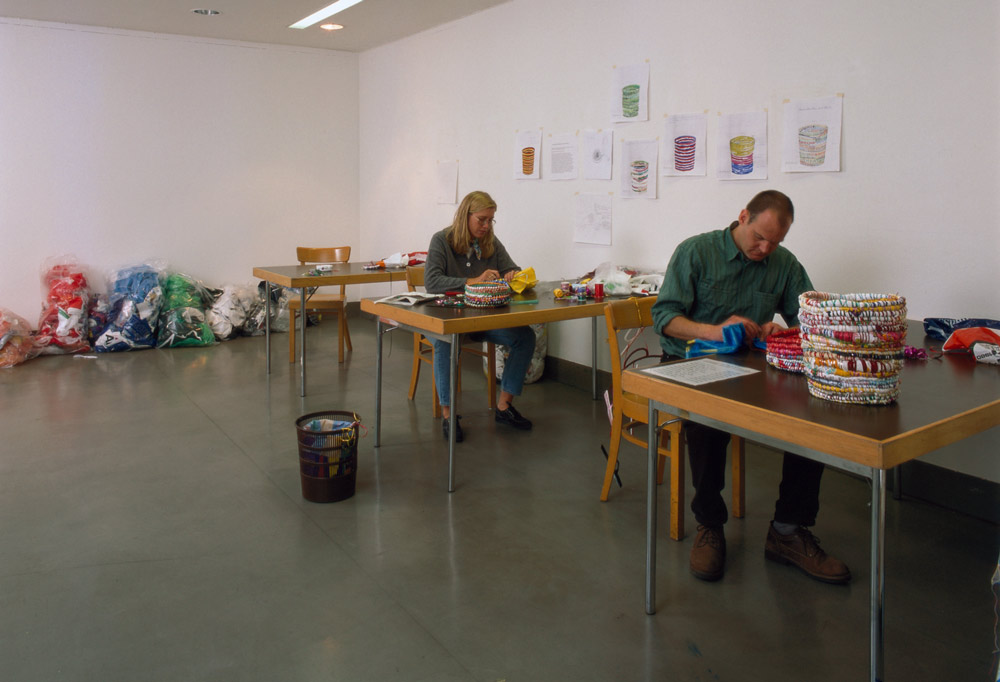 22 Production of annual editions: art historians weaving fruit baskets at the Bonner Kunstverein. The needed material, plastic bags and gift ribbons, was collected by the members of the art association. Exhibition Wir machen wahr, was der Grüne Punkt verspricht in the frame of the exhibition series Duchamps Enkel, Bonner Kunstverein, 1997
22 Production of annual editions: art historians weaving fruit baskets at the Bonner Kunstverein. The needed material, plastic bags and gift ribbons, was collected by the members of the art association. Exhibition Wir machen wahr, was der Grüne Punkt verspricht in the frame of the exhibition series Duchamps Enkel, Bonner Kunstverein, 1997
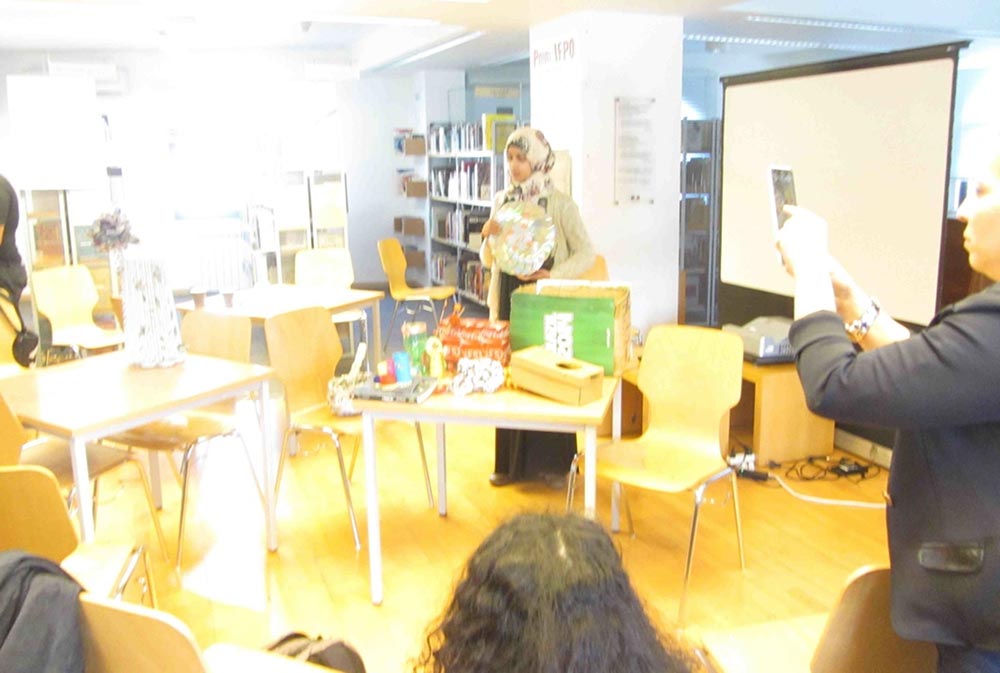 23 Participants of the Sustainability Workshop show their upcycled products at the Goethe-Institut Ramalla, March 2015.
23 Participants of the Sustainability Workshop show their upcycled products at the Goethe-Institut Ramalla, March 2015.
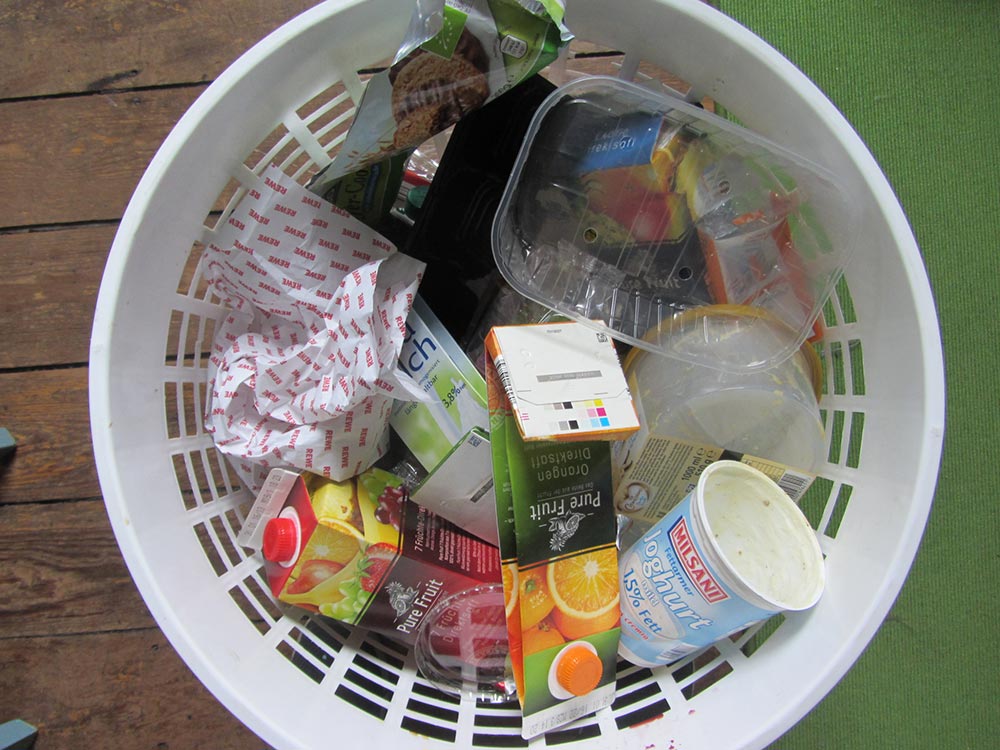 24 Between 1995 and 2015, the amount of plastic sales packaging produced in Germany increased continuously.
24 Between 1995 and 2015, the amount of plastic sales packaging produced in Germany increased continuously.
Ill. 1, 3, 6, 7: Duales System Deutschland AG
Ill. 4, photo: Olafur Gíslason
Ill. 5, 8, 9, 10, photos: Stefan Exler
Ill. 11, video: Manuel Zonouzi
Ill. 14, photo: Quirin Leppert
Ill. 15, 16, chart: Michael Kress
Ill. 19-21, photos: Barbara Stenzel
Ill. 22, photo: Bernhard Schaub